Stop Buying Sad Peaches: A Pro’s Guide to Stone Fruit
I’ve spent what feels like a lifetime in produce aisles and back rooms, unpacking crates of fruit before most people have had their first cup of coffee. You learn things the hard way back there. You learn the scent of a truly perfect peach—a smell you never, ever forget. After all these years, three fruits still cause the most confusion: peaches, nectarines, and apricots.
In this article
You see them piled up in glorious heaps during the summer, and honestly, most people use the names interchangeably. And while they’re definitely family, they are not the same. Each one has its own personality, its best uses, and its secrets to getting that perfect, juicy, run-down-your-chin ripeness. This isn’t just a list of facts; this is the stuff I’ve learned from handling literally tons of this fruit. I want you to be able to walk into any store and pick a winner every single time.

So, What’s the Real Difference, Anyway?
To really get it, you have to know a little about their family tree. All three are what we call “drupes” or stone fruits, part of a big, happy family that also includes plums and cherries. They all have that hard pit in the middle. But their relationships are a lot closer than you might think.
Peaches and Nectarines: Basically Identical Twins
Here’s the big secret: a nectarine is just a peach with a different outfit. Seriously. A nectarine is a variety of peach, not some weird hybrid of a peach and a plum (a common myth!). The only real difference is a single gene. Peaches have a dominant gene that gives them that classic fuzzy skin. Nectarines have a recessive gene, which means their skin is smooth.
That’s it. In fact, it’s not unheard of for a peach tree to spontaneously grow a nectarine on one of its branches through a natural fluke. I’ve seen it myself in small orchards.
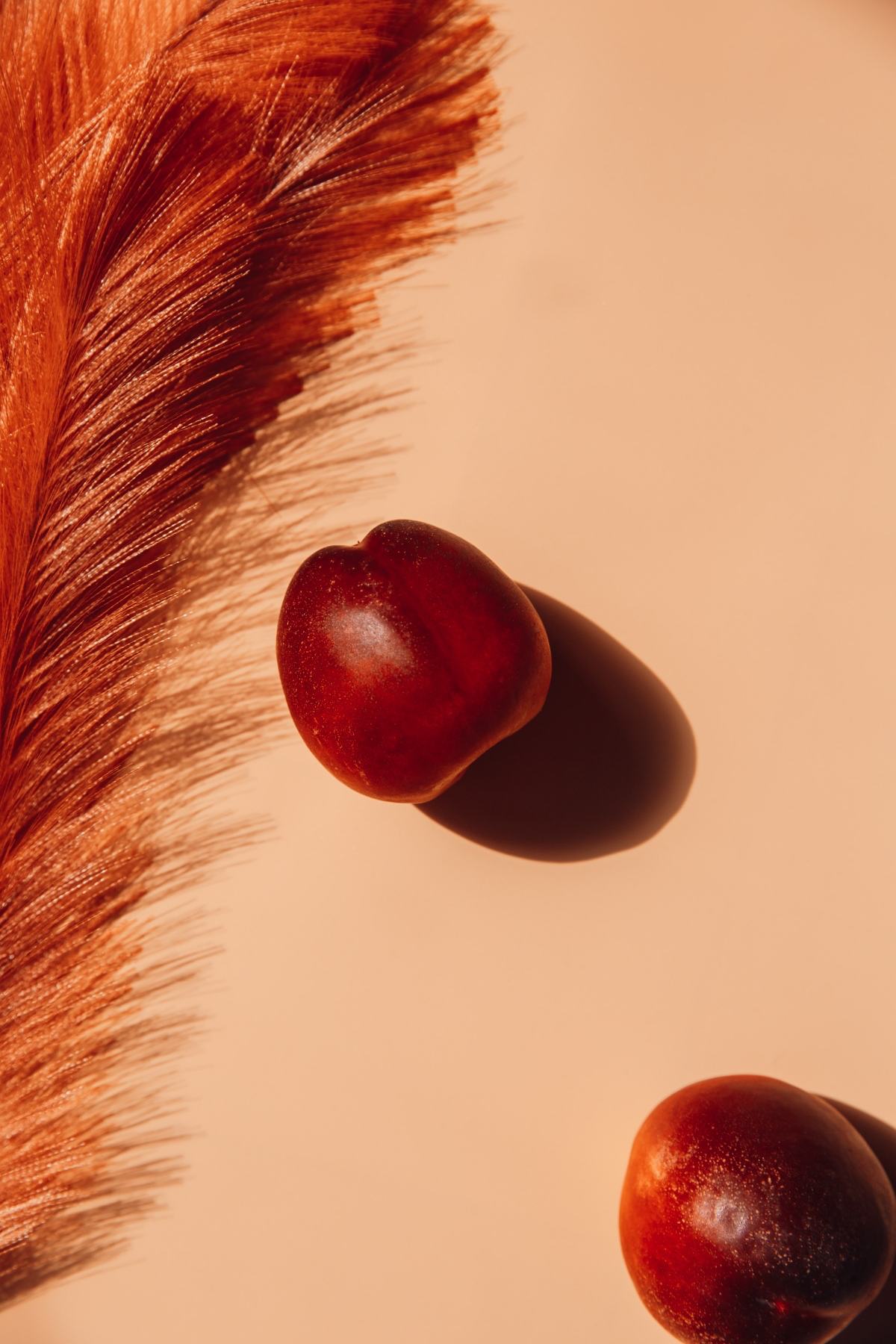
But that one little difference has practical effects. The fuzz on a peach acts like a tiny velvet jacket, offering a bit of protection from bumps and scrapes. A nectarine’s smooth skin is more delicate, which is why they can sometimes look a little more banged up at the store. A few surface blemishes don’t mean the fruit is bad, just that its journey was a little rough.
Apricots: The Distinct Cousin
Apricots, on the other hand, are a different species entirely. They’re still in the same family, but they are not a type of peach. They’re generally smaller, with a firmer, denser flesh. The flavor is what really sets them apart—it’s a beautiful balance of sweet and tangy. Their skin is something special, too… a kind of velvety-soft texture that’s a perfect middle ground between peach fuzz and a nectarine’s slick skin.
Understanding this is key. You wouldn’t swap an apricot into a peach cobbler recipe and expect the same soupy, sweet result. They have less water, a different sugar level, and a much firmer texture when cooked.
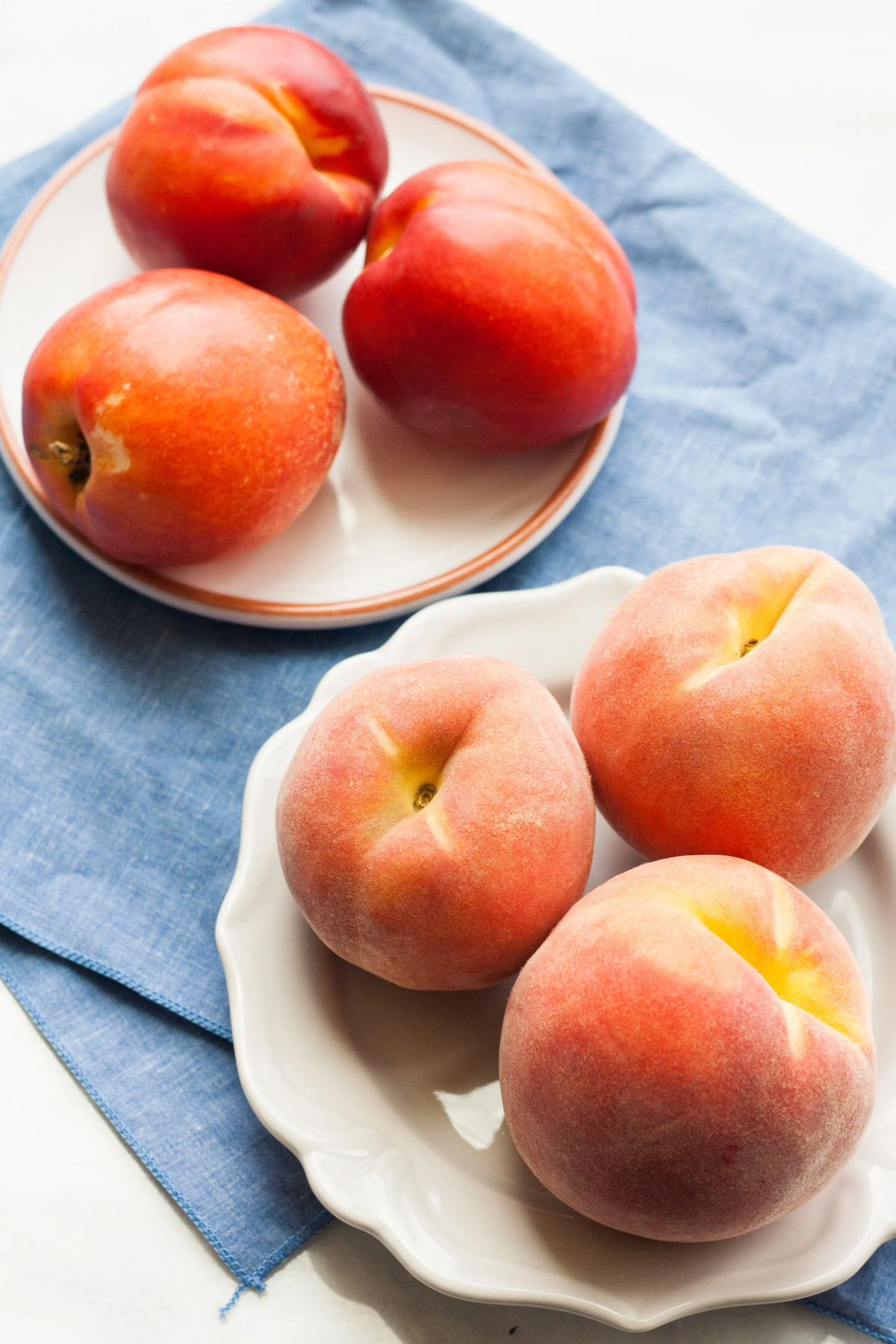
A Quick-Glance Guide
When you’re standing in the grocery store, here’s the fast and dirty breakdown:
- The Peach: Look for a fuzzy, slightly soft skin. The flavor is typically very sweet and floral. They’re amazing for eating fresh, baking into pies, and grilling. Their peak season is mid-to-late summer.
- The Nectarine: You’ll see a smooth, shiny skin. The flavor is often a bit spicier and slightly more intense than a peach’s. Also fantastic for fresh eating and grilling, and you don’t have to peel them for sauces! Their peak season runs parallel to peaches.
- The Apricot: Its skin is velvety and soft. The flavor profile is a unique mix of sweet and tart. These are the absolute champions for making jams (they’re naturally high in pectin) and for drying. They show up a bit earlier, typically from late spring to mid-summer.
How to Pick a Winner (And Avoid the Duds)
Most stone fruit is picked firm so it doesn’t turn to mush during shipping. It will soften on your counter, but here’s the crucial part: it will not get any sweeter. The sugar is locked in the moment it’s picked. Your job is to find the one that was picked at the right moment. I rely on three senses: smell, sight, and touch.
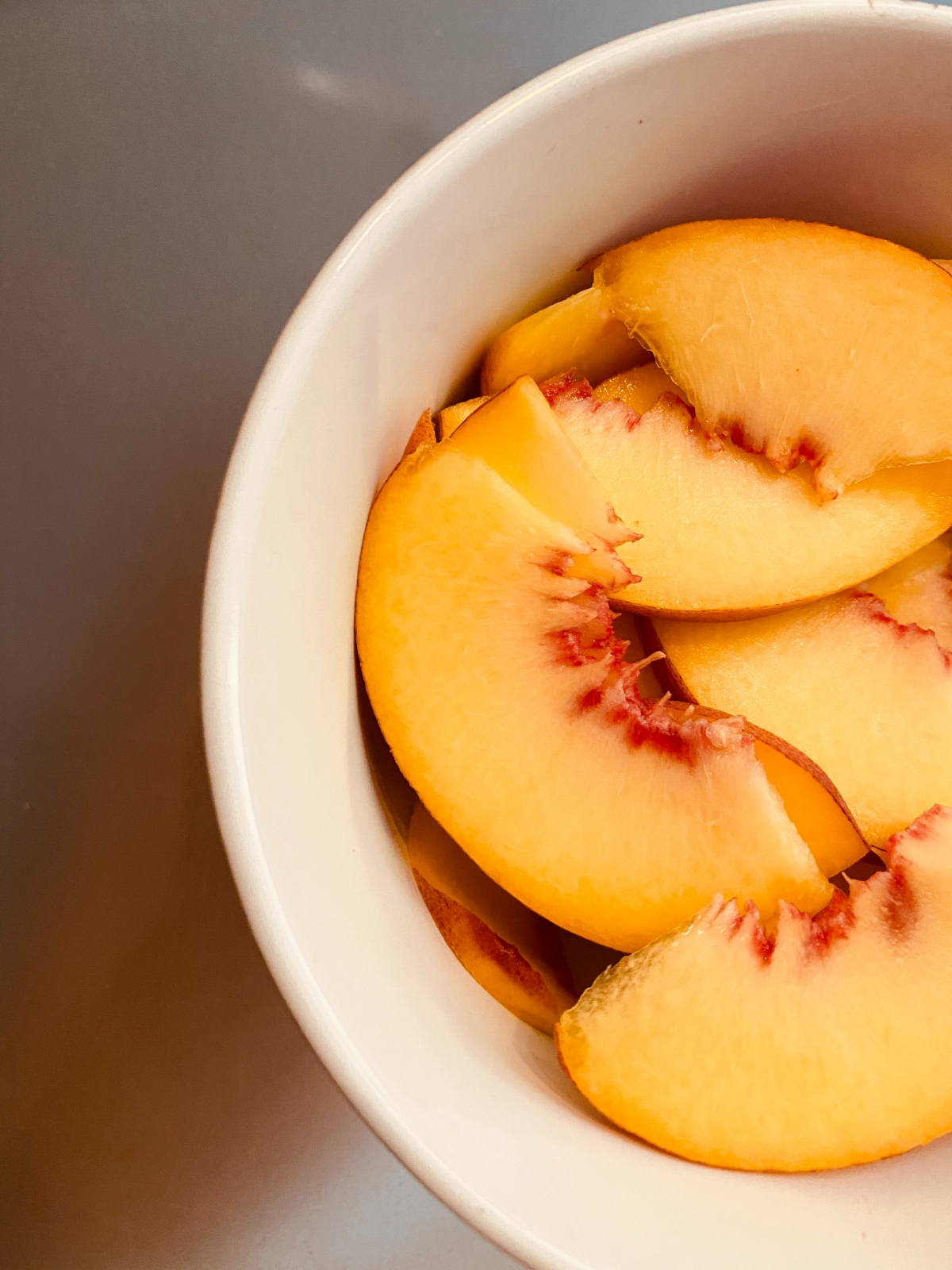
For Peaches & Nectarines:
- Smell it first. This is my go-to test. A ripe one should smell sweet, fragrant, and amazing. If you smell nothing, it was picked too green. It’ll get soft, but it will taste like water. Don’t be shy—give it a sniff!
- Ignore the red. That pretty red blush? It’s basically just a tan. It’s a characteristic of the variety, not ripeness. Instead, look at the “background” color of the fruit. It should be a deep, creamy, or golden yellow. Any hint of green means it’s a no-go.
- Gentle pressure is key. Cradle the fruit in your whole hand (don’t poke it with your thumb!) and squeeze gently near the stem. It should have a slight give. Rock-hard means it needs a few days. Mushy means it’s already past its prime and is best for a smoothie… today.
For Apricots:
Apricots are the trickiest of the bunch because their firm texture can easily fool you.
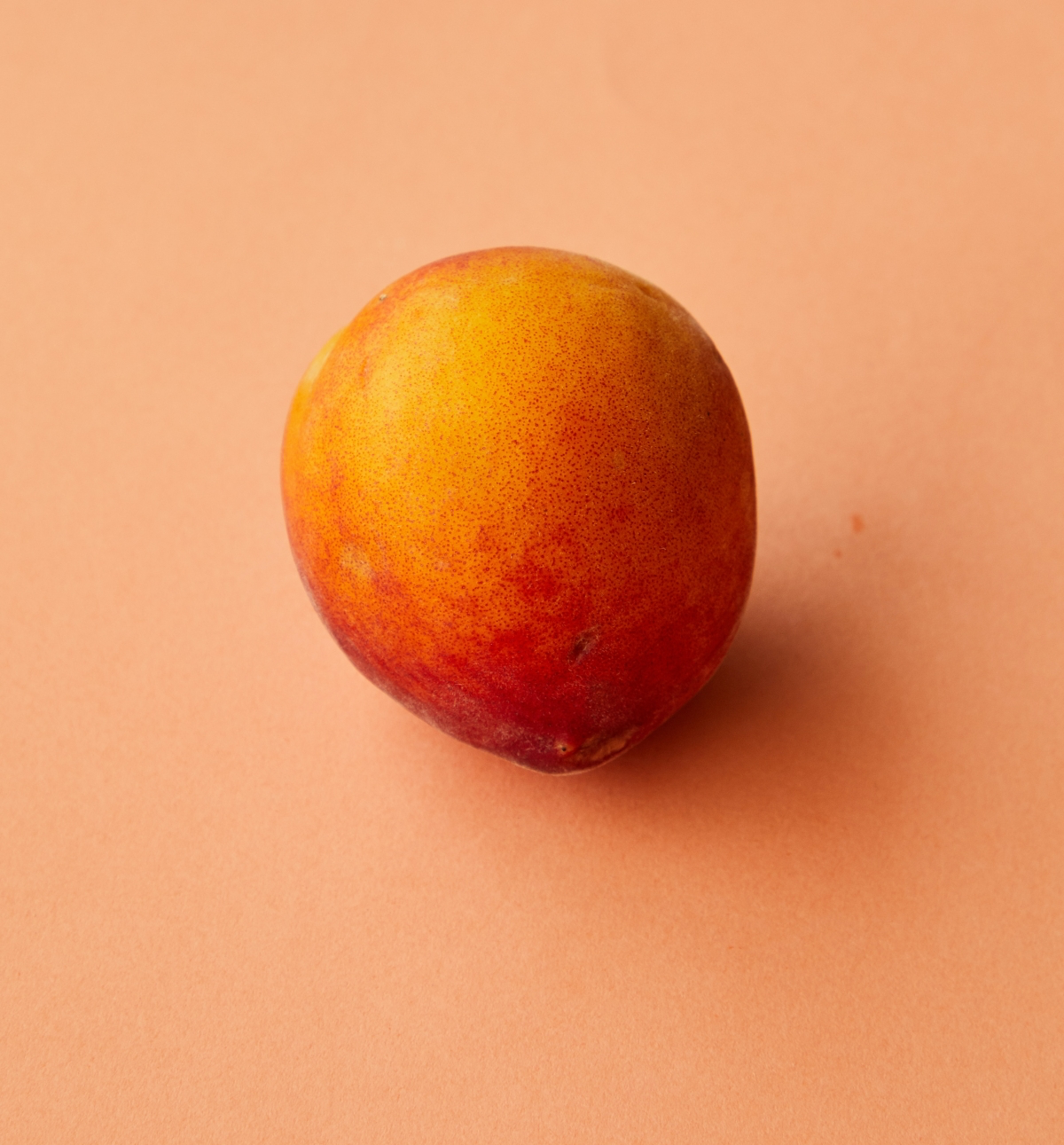
- Color is everything. Look for a deep, vibrant orange. A reddish blush is a good sign on some varieties. Avoid anything that’s pale yellow or has green patches. I learned this the hard way once when I ordered a case of beautiful but pale apricots for a bakery. They softened into chalky, tart disappointments, and we had to toss a whole batch of tarts. A painful lesson!
- Feel for firm-plumpness. A ripe one will still be fairly firm but should yield slightly to pressure. It should feel heavy and plump for its size. Avoid shriveled-looking ones; they’ve lost too much moisture and will be dry inside.
The #1 Question: How Do I Ripen This Rock-Hard Peach?
Okay, so you bought some firm fruit. Now what? You have to let it ripen on the counter. Just place the fruit on a flat surface, shoulder-side down, and give them some space so they don’t bruise each other. Depending on how firm they are, expect this to take anywhere from 2 to 4 days.
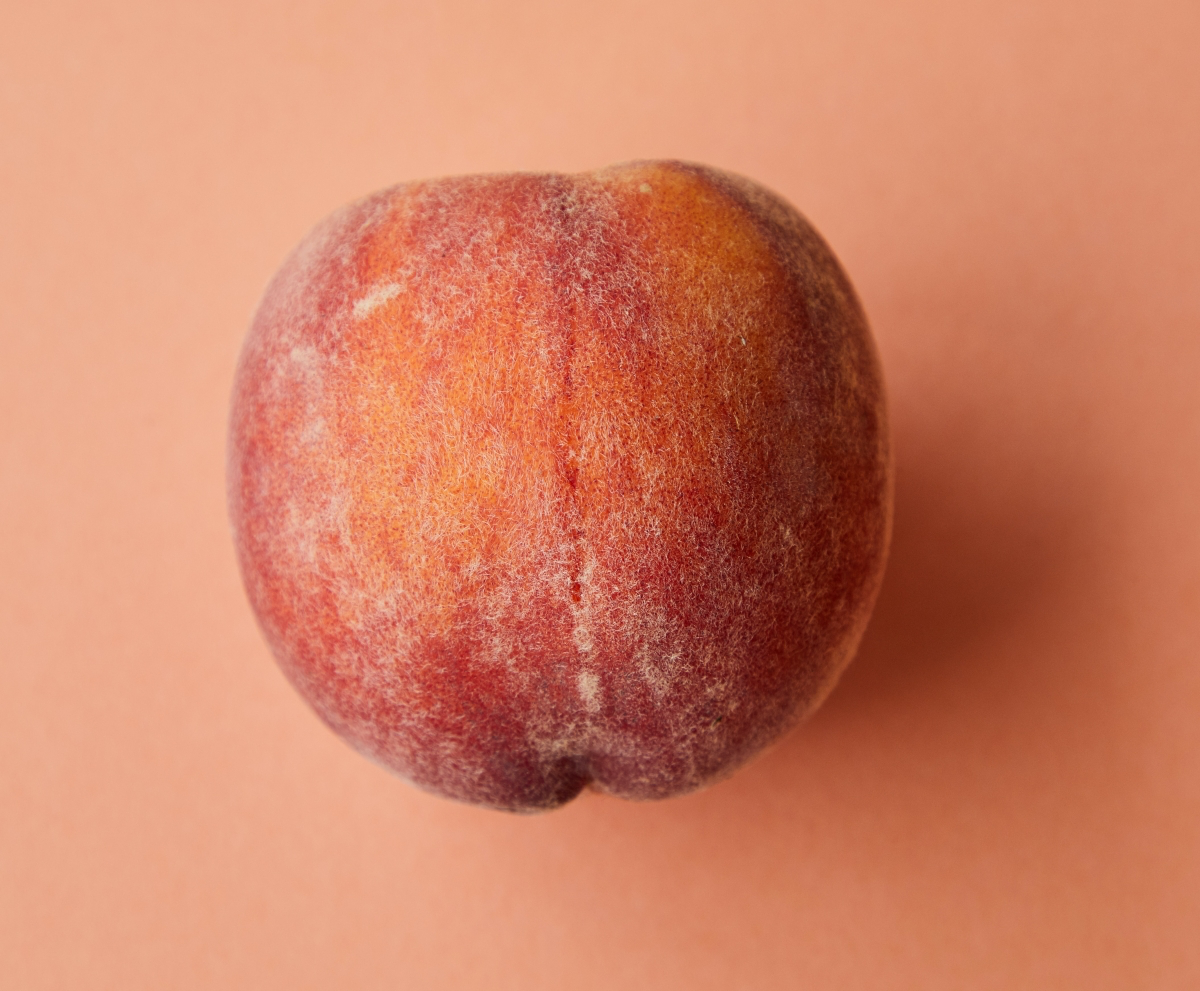
Want to speed it up? Use the classic paper bag trick. Place the fruit inside a paper bag, fold the top over, and leave it on the counter. The fruit naturally releases ethylene gas, which is a ripening agent. The bag traps the gas, and the process goes much faster—often ripening the fruit overnight. Just check on it frequently so it doesn’t go from perfect to mushy.
Storing Your Haul and Avoiding Common Mistakes
Once your fruit is perfectly fragrant and ripe, you have a choice: eat it now, or put it in the fridge to hit the pause button on ripening. A ripe peach or nectarine will keep in the fridge for another 3 to 5 days.
But here’s the biggest mistake people make: never, EVER put unripe stone fruit in the refrigerator.
The cold stops the ripening process dead in its tracks and causes something called “chill injury.” This is when the fruit gets a terrible mealy, dry, and woolly texture inside, even if it feels soft on the outside. It’s a real bummer and a total waste of a potentially great piece of fruit.
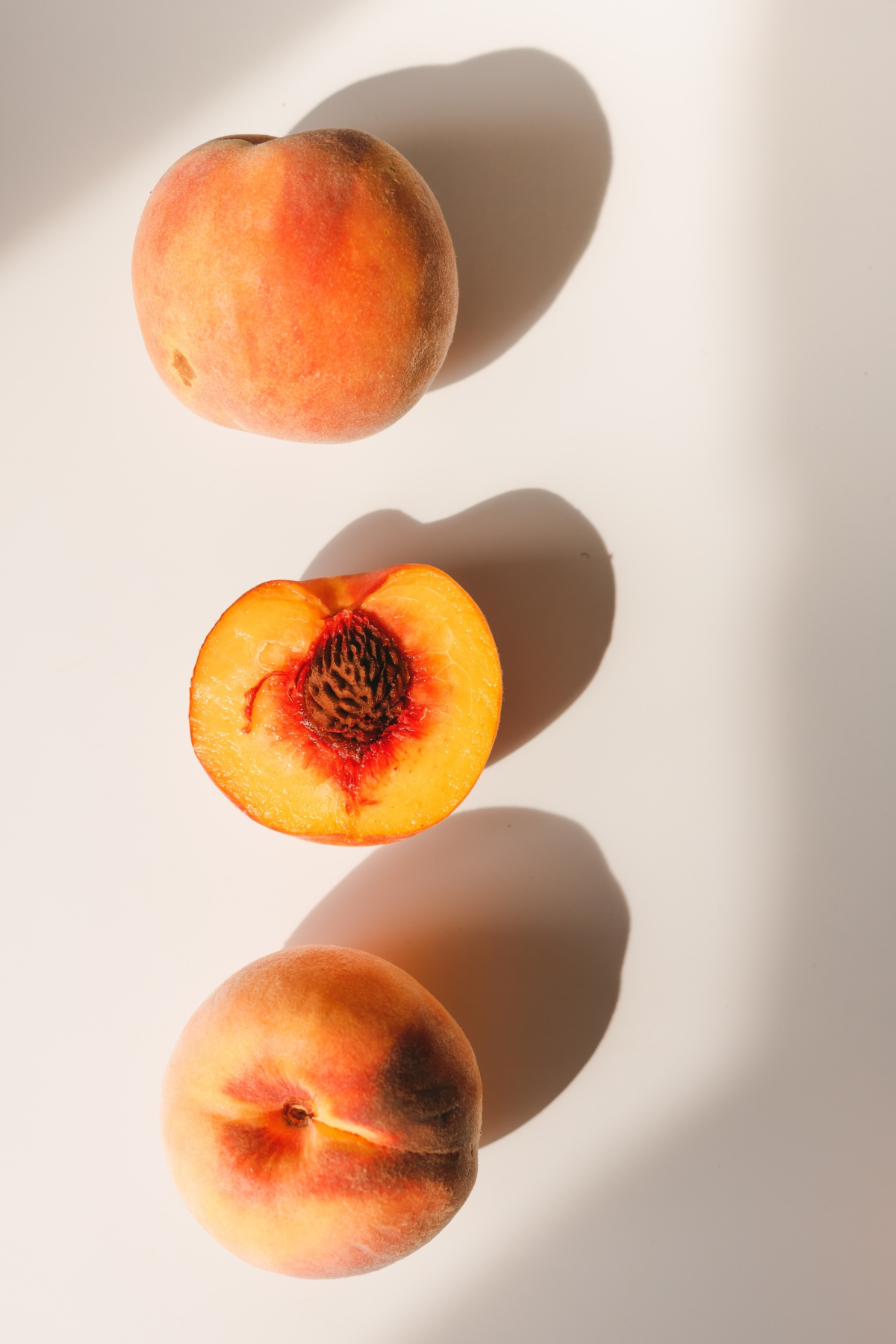
Cooking and Prepping Like a Pro
The skin on all three is totally edible and packed with nutrients. For eating fresh, just give it a wash and go for it. For baking or making jams, however, peach skin can get a little tough and bitter. So, you might want to peel them.
The fastest way to peel a peach is by blanching. It seems fussy, but it’s super fast:
- Get a pot of water boiling and a big bowl of ice water ready.
- Cut a small “X” on the bottom of each peach.
- Drop them in the boiling water for just 30-60 seconds. Don’t walk away!
- Scoop them out and immediately plunge them into the ice water. The shock makes the skin pull away from the flesh.
- After a minute, the skins should slip right off with your fingers. Easy peasy.
By the way, you almost never need to peel nectarines or apricots. Their thin skins are a non-issue in most recipes.
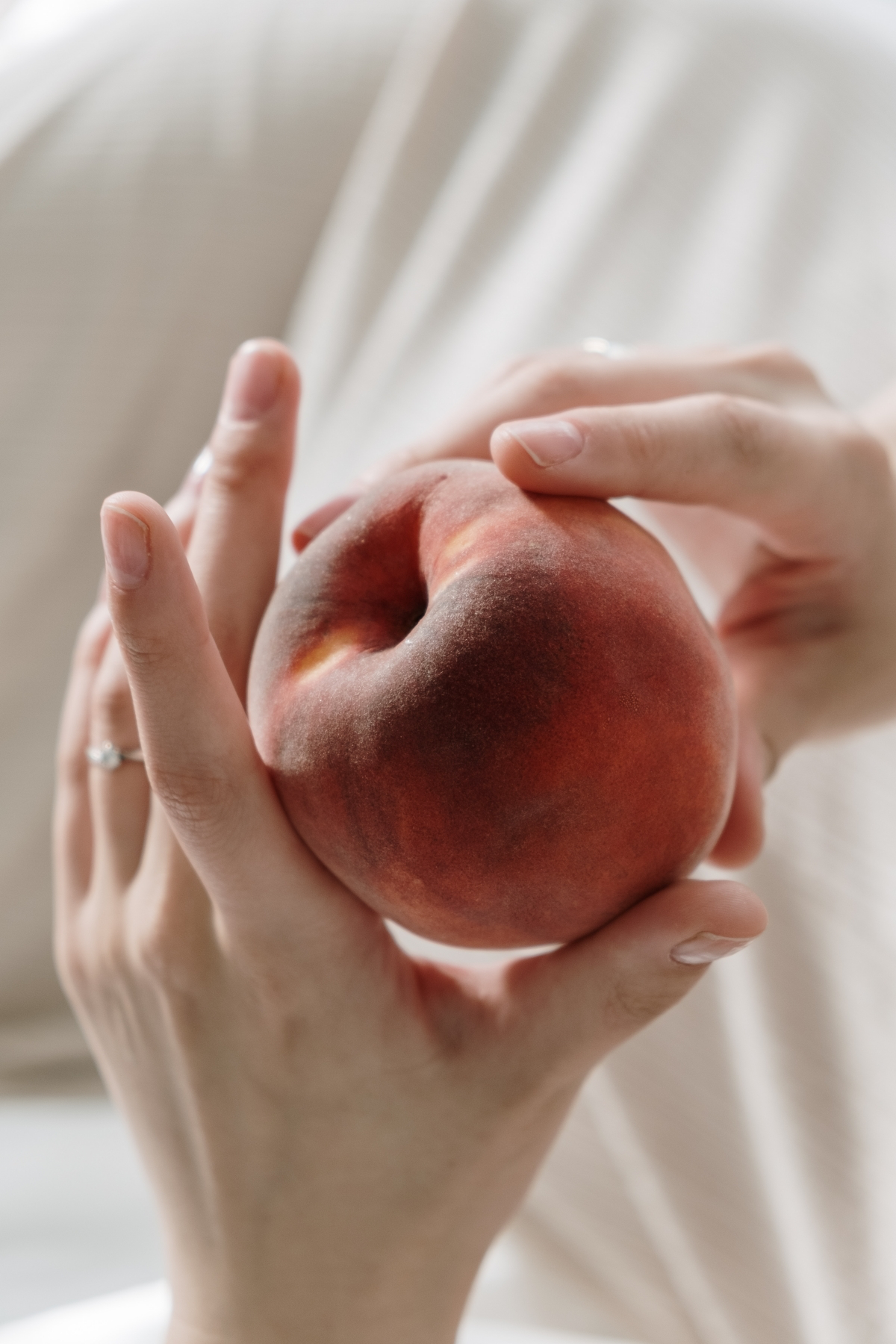
Getting to the Good Stuff: Cooking Tips
Once you’ve got them prepped, the fun begins. My absolute favorite way to use them is on the grill.
Quick tip: The first time I grilled peaches, I used some that were super-ripe. They basically melted into a sugary puddle on the grates. A total disaster! You need to use firm-ripe fruit for this. Cut them in half, pop out the pit, and brush the cut sides with a neutral oil (like canola or grapeseed). Grill them cut-side down for just 2-4 minutes. Those grill marks look amazing, and the heat caramelizes the sugars. Serve them with vanilla ice cream or a pork chop.
A Heads-Up on Budget and Safety
Let’s talk about the practical stuff. Peaches and nectarines are consistently on the “Dirty Dozen” list, which tracks produce with higher pesticide residues. If you’re concerned about this and plan to eat the skin, going organic is a good choice. But it can also cost 30-50% more. If organic isn’t in the budget, just give them a really good wash with a produce scrub.
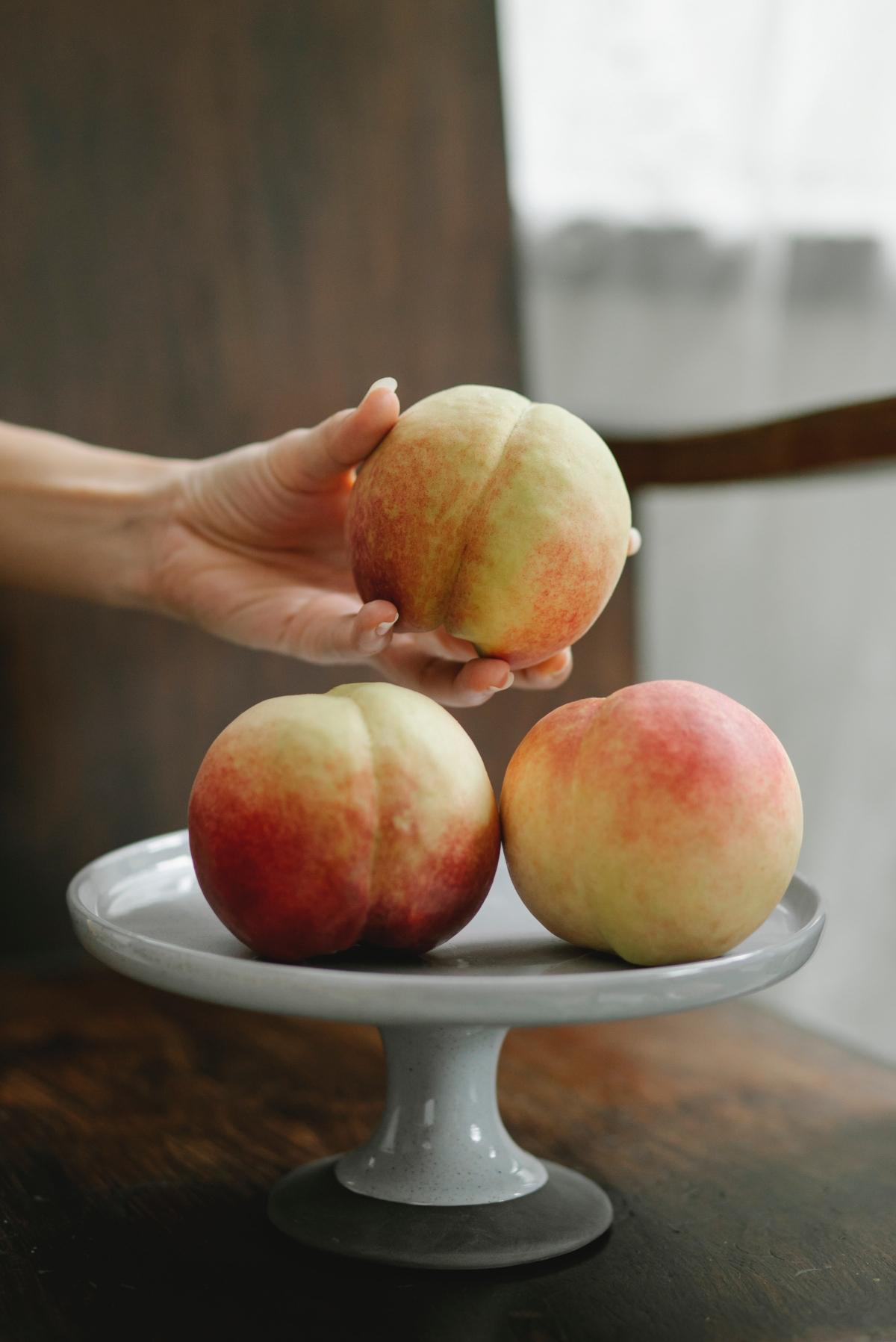
Also, a quick safety warning: the kernel inside that hard pit contains a compound that can be toxic if you crush and eat a bunch of them. It’s a very low risk, but just don’t do it. Always toss the pits where kids or pets can’t get to them.
Finally, the best time to buy is always during their peak local season—usually mid-to-late summer for peaches and nectarines, and a bit earlier for apricots. That’s when you’ll find the best flavor and the best prices, often dipping as low as $1.50-$2.50 per pound. Off-season, when they’re shipped from halfway around the world, that price can easily double, and the quality often nosedives.
So next time you’re at the market, I hope you’ll feel a little more like an insider. Trust your nose, look for that golden background color, and you’ll be bringing home the absolute best of the season.
Galerie d’inspiration
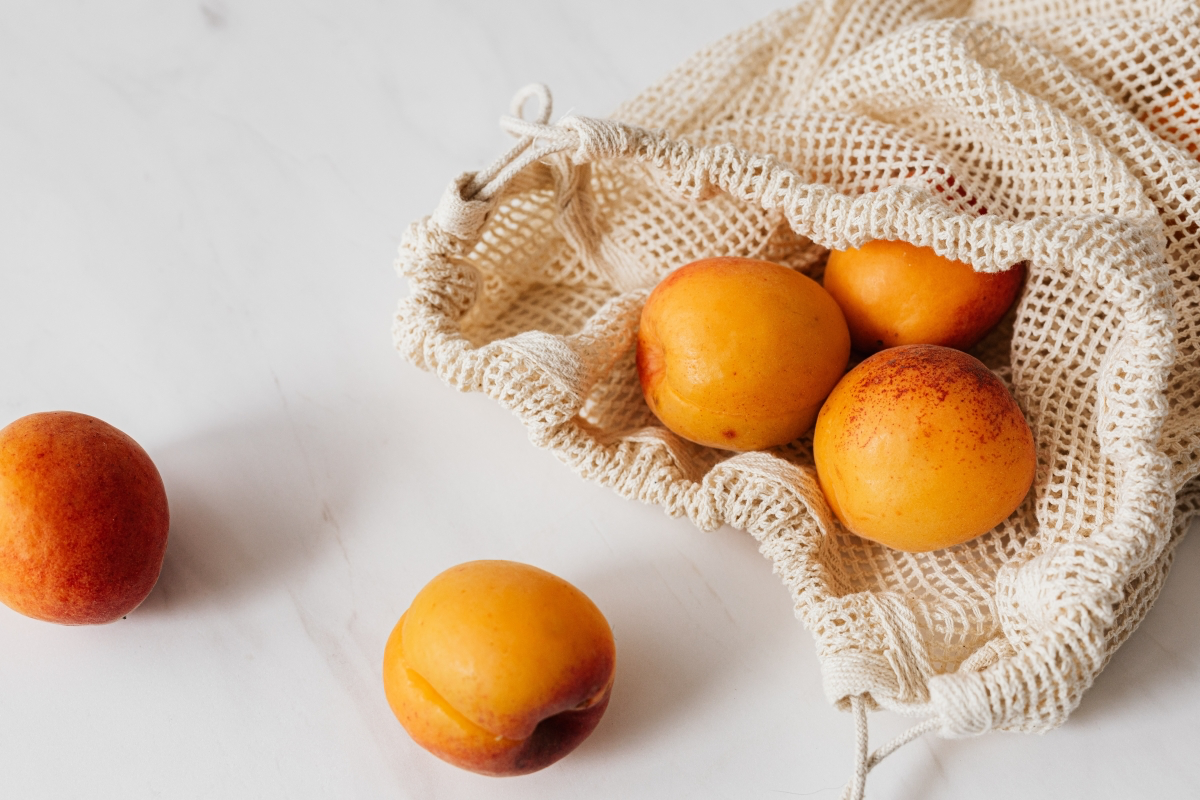
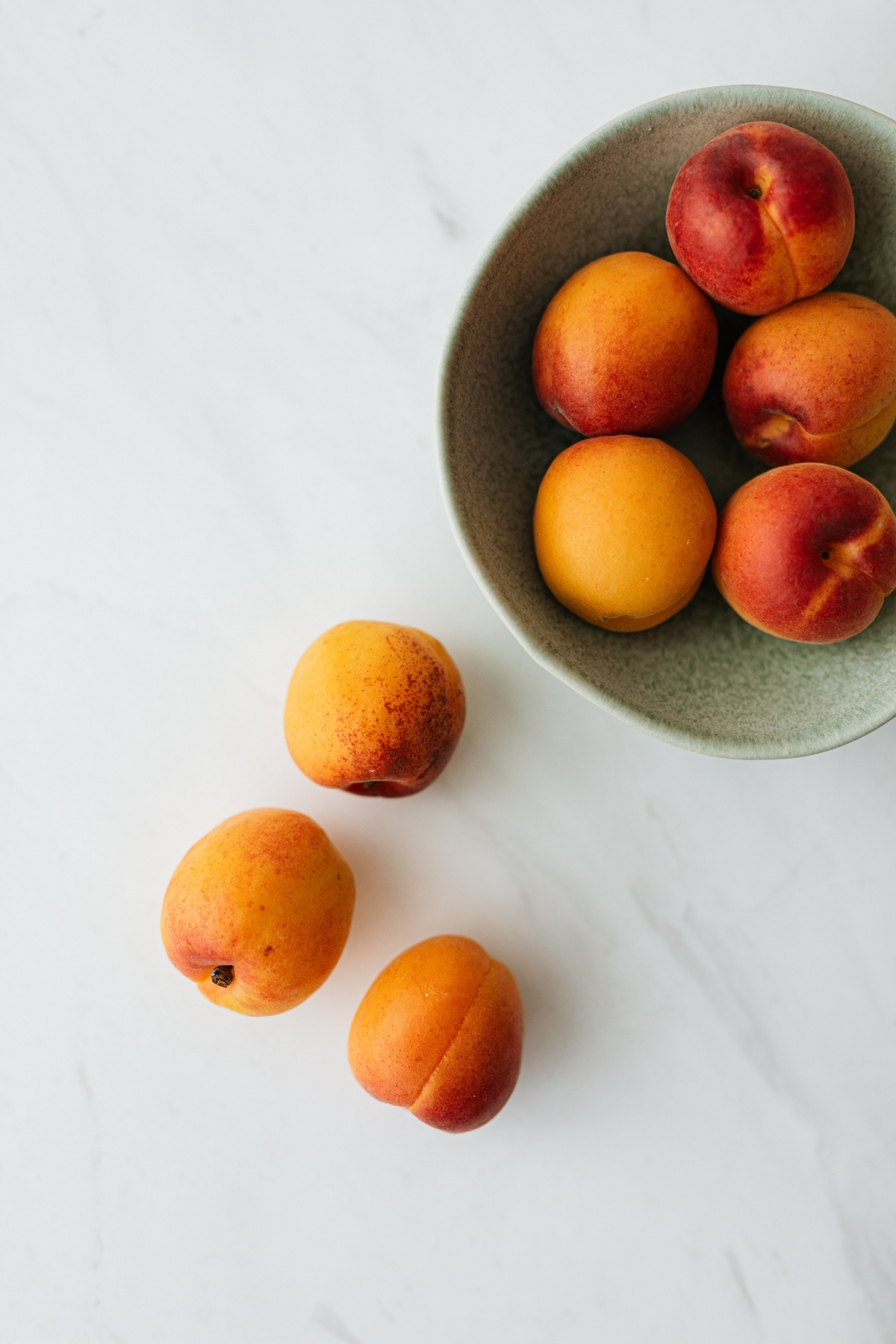
Freestone: The pit falls away easily from the flesh, making them ideal for slicing, grilling, and eating out of hand. Most peaches you find at the supermarket from mid-season onward are freestone.
Clingstone: The flesh literally clings to the pit. They are often the first varieties of the season and are prized by canners for their firm, juicy texture that holds up well during processing. Trying to slice one neatly is a messy fool’s errand!
For no-fuss summer snacking, always ask your grocer if the current batch is freestone.
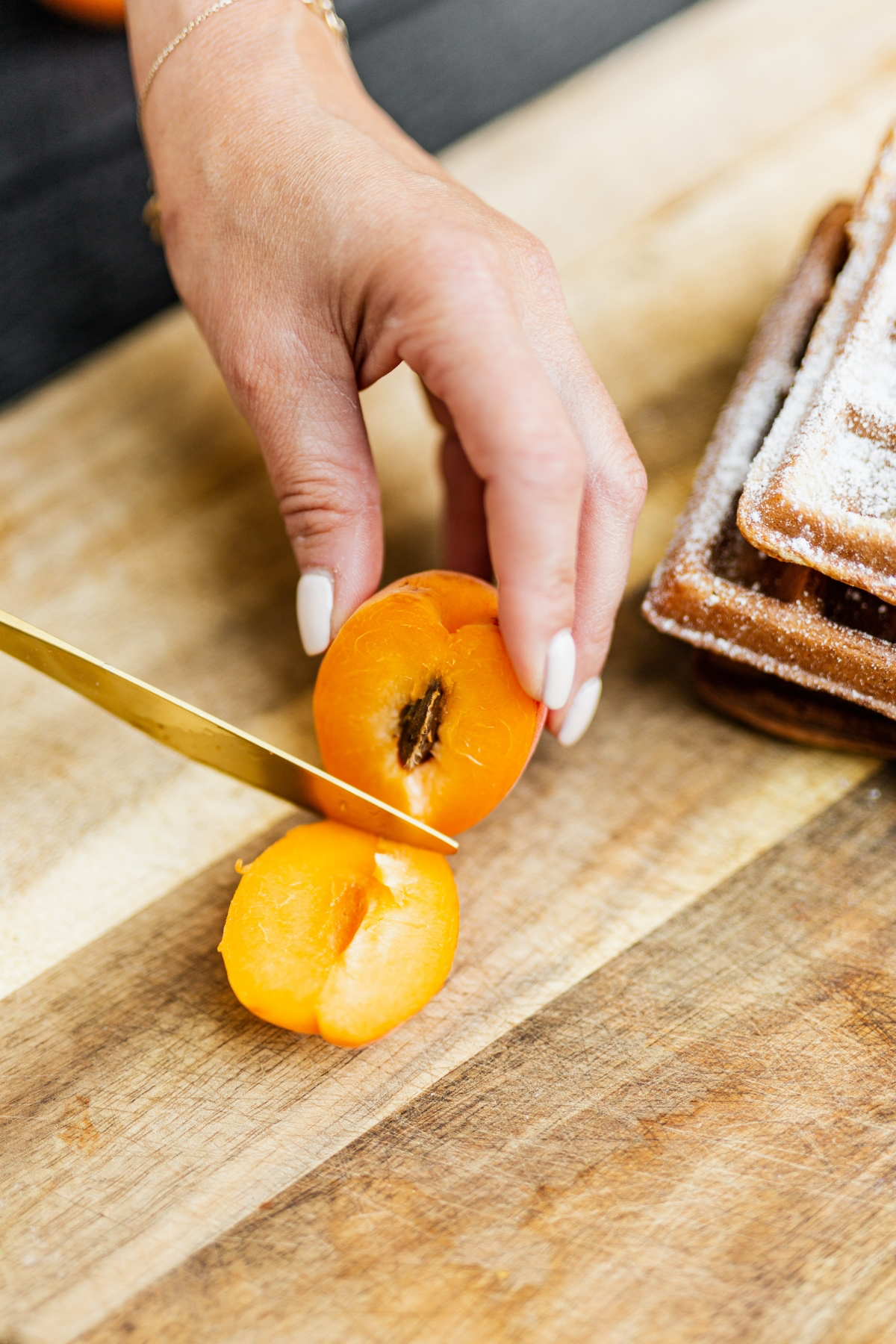
Over 90% of the U.S. nectarine crop comes from California, with a peak season running from late June through August.
This is why a nectarine in May might be disappointing, but one in July feels like pure sunshine. Shopping seasonally isn’t just a trendy concept; it’s the single best guarantee for flavor. Following the harvest schedule means you’re getting fruit at its natural peak, often at a better price, and with a much smaller carbon footprint from transportation.
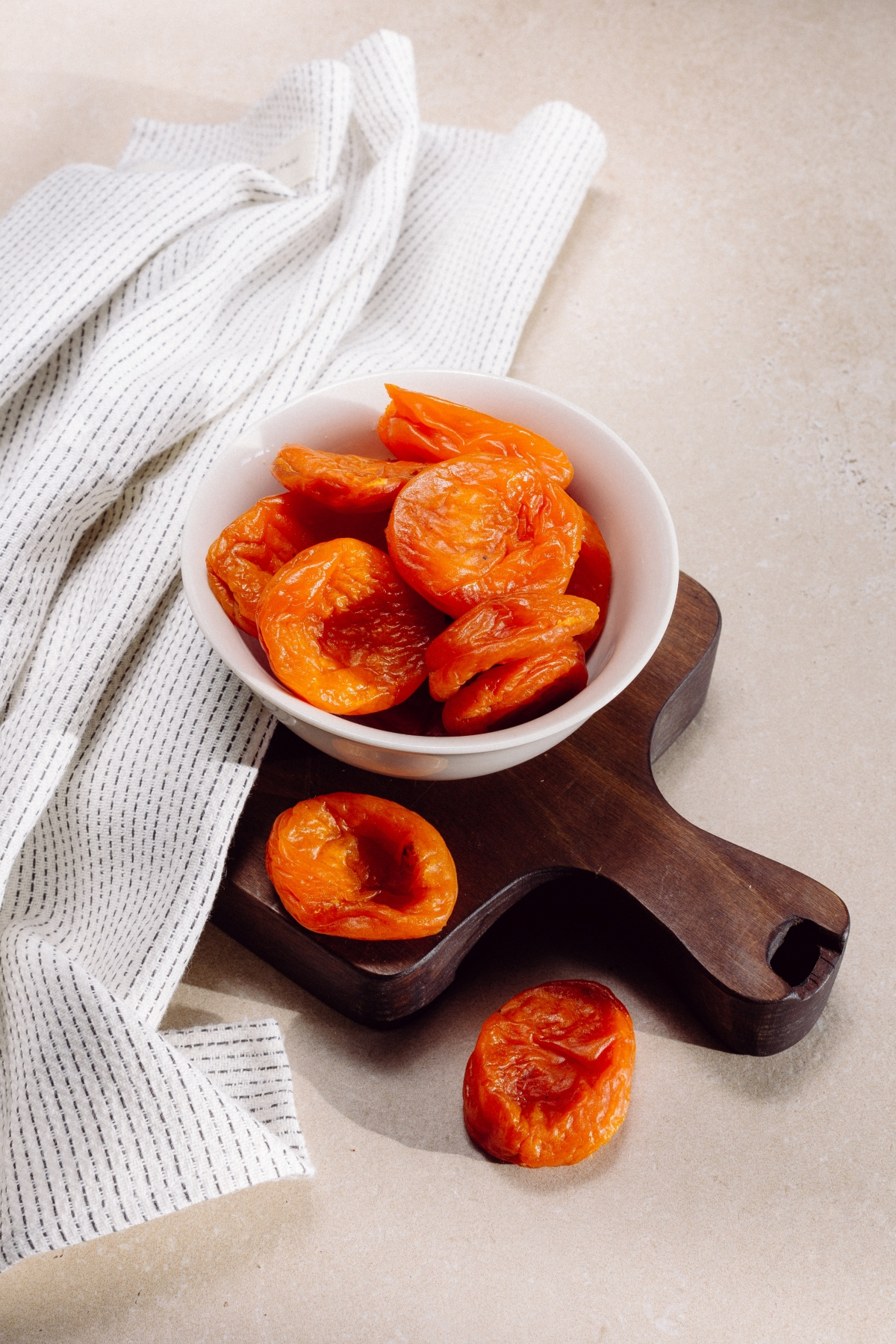
The secret to rescuing a peach that’s not quite ripe?
Forget the sunny windowsill—direct sunlight can cook the fruit, making it mushy, not juicy. Instead, place your firm peaches or nectarines in a paper bag and leave it on the counter. The bag traps the natural ethylene gas the fruit releases, speeding up ripening. Check daily by giving a gentle press near the stem; it should have a slight give when ready.
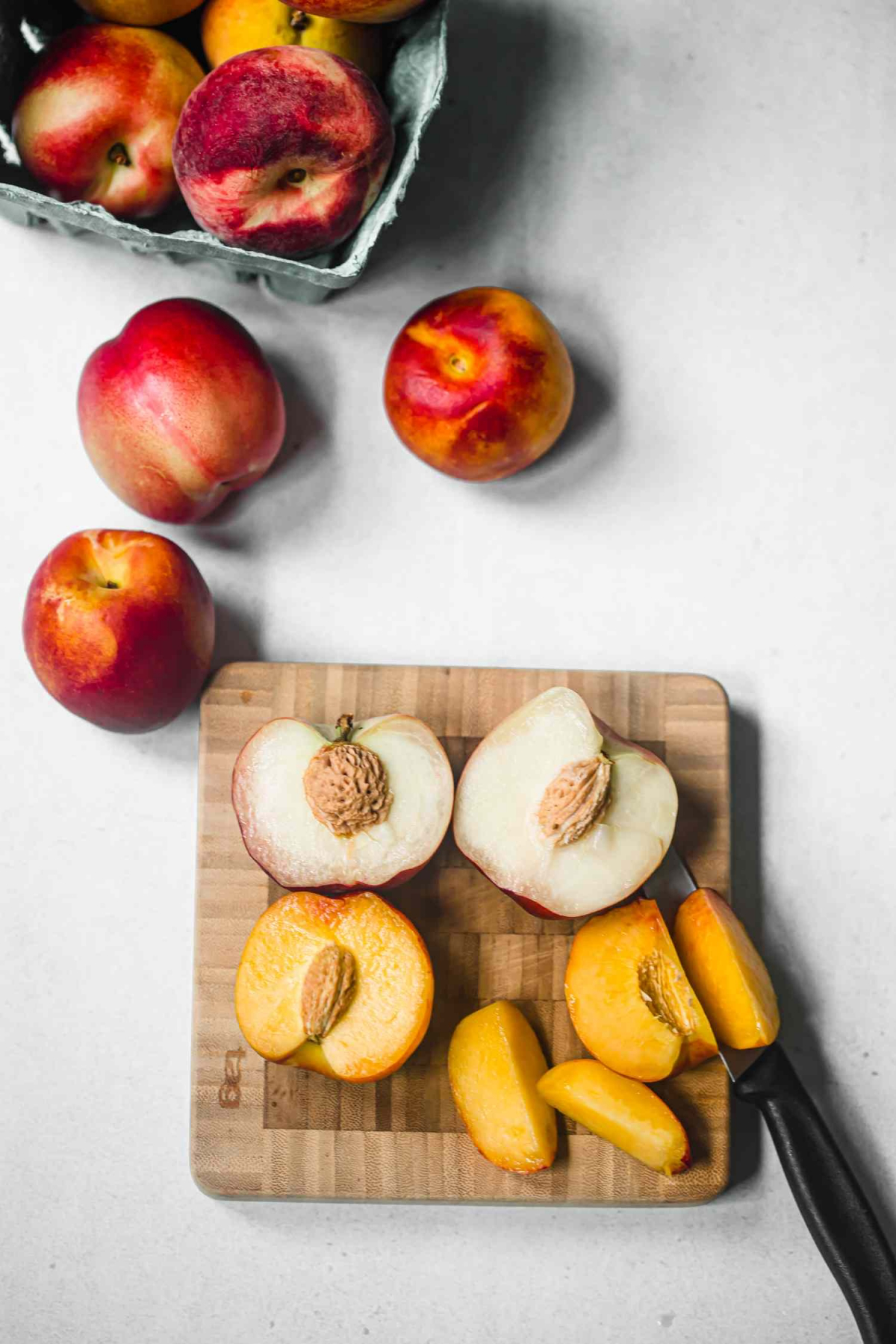
Take your stone fruit beyond the fruit bowl. Their balance of sweetness and acidity makes them a stunning partner for savory dishes. Try these combinations for a true taste of summer:
- Grilled nectarine halves with creamy burrata, fresh basil, and a drizzle of balsamic glaze.
- Thinly sliced apricots tossed in a quinoa salad with pistachios, mint, and a light lemon vinaigrette.
- Diced peaches mixed with red onion and cilantro for a fresh salsa to serve with grilled chicken or fish.
The number one mistake: Refrigerating stone fruit before it’s ripe. This triggers a process called ‘chilling injury,’ which stops the ripening process dead in its tracks. The fruit will never get sweeter or juicier. Instead, it develops a dry, mealy texture. Only store ripe, ready-to-eat fruit in the fridge to extend its life for a few extra days.










